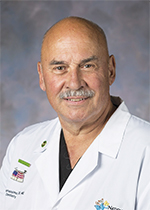My View: It's time to acknowledge safety in dentistry

The dental profession has been diligent in its embrace of evidence-based dentistry and its benefits for patients and in creating a more efficient and equitable care system.
We trail our medical colleagues in building a solid evidence foundation for all we do, but we are headed in the right direction. An area of health care where we still lag behind is safety — safety in our patient care and safety for ourselves and our dental team. Most of us would consider dental care a safe and effective endeavor, but as our medical colleagues discovered two decades ago, we just don’t know. EBD is moving us toward knowing more about effectiveness, but we lack a mechanism and culture to address safety.
Almost every entity involved in health care — clinicians, hospital systems, accrediting bodies, government agencies and payers — acknowledges safety as a “fourth pillar” along with health, value and cost. Outcomes in general health almost always include an address of an unplanned injury or harm. Introduction of new devices, drugs and materials requires evidence and deliberation by stakeholders.
Hospital systems track nosocomial infection, falls and other negative outcomes. Physician medical staff appointments and evaluations address clinical outcomes such as wound infections and unplanned readmissions. These metrics directly affect patient care but also certifications, payment and reputation.
Dentistry has no such culture or accountability, except at the most serious level, and, in my experience as an observer of these events in children, many events are shelved or dealt with below the radar. State dental boards may not be required to make their actions public.
Our legal system permits burial of events that in medical care would merit corrective action. Dentists, quite frankly, have the ultimate ability to make judgments on the need to report negative events in many jurisdictions. Because of these limitations of the dental care system, we really don’t know much about safety in our care, what injury can be prevented, and as a result, we consider many of our preventable treatment complications as acceptable collateral events rather than preventable harm.
The dental specialties have stepped up to address safety. In oral surgery, a registry of safety events has been started. Pediatric dentistry is developing a cloud-based safety resource for its membership and convened a symposium on safety in pediatric dental practice last fall to begin educating its members.
The dental radiologists foster gentle imaging of patients in pursuit of safer radiographic practice. These are a few examples.
Organized general dentistry has been slower to embrace the safety concept except in reaction to events like patient death, infection control lapses, material contamination and other safety issues, and most of these responses have been after the fact.
Proactive attention to safety has been slow in coming with lack of awareness and understanding of safety and its metrics, slow adoption of continuous quality improvement in dental practice, lack of awareness of types and numbers of safety events and concern about more regulation of dental practice often given as the reasons why safety is an afterthought.
Dental education has also been behind in creating a safety culture in graduates. While making significant changes in areas like diversity, health disparities and patient advocacy, dental education has not added patient safety to its curricula or competencies.
So where do we go from here? The first step is to admit we have a problem — not in unsafe dental care, but in recognition that we just do not know. The Council on Advocacy for Access and Prevention is currently working to define elements of safety in dentistry and make recommendations for further action.
That is a first step. From there, we need to look hard at how we educate dentists, develop a culture of safety that encourages introspection without penalty, as is the case in medicine, and push for far better identification and registration of unplanned harm events at the state and national levels.
These steps are necessary even if we deem dental care safe because dental care will change over time. These latter steps will be years in development and implementation, but the time is right to begin this process in earnest.
Why now? Medicine and other parts of the health care system have added safety to their ongoing considerations in health care. We are two decades or more behind them, and they are watching.
We have the benefit of hospital- and community health center-trained dentists with the skills and knowledge to assist the rest of us in this journey. The public and its advocates will also at some point ask why major safety events occur in dentistry when other aspects of human endeavor like air travel can have a zero score.
We have thousands of new graduates each year who will undoubtedly face a far more stringent practice world with demands by payers and patients around safety, and they will seek help from organized dentistry. And, if we value the solo or small group practice model, we need to confront the reality that corporate dental care and community health center care will set the ground rules for safety. If a Medicare dental benefit is enacted, as a federal program, safety requirements will accompany dentist participation — you can bet on that.
Safety in health care is a profession’s ultimate advocacy commitment. It means looking beyond what we do now. What more fitting validation of our profession’s recent commitment to patients in its mission statement than to embark on the safety journey? If dentistry is to be taken seriously as a health profession, we need to demonstrate a real and visible commitment to better understand and promote safety in oral health care.
Dr. Paul Casamassimo is the chief policy officer of the American Academy of Pediatric Dentistry and a past president of the Academy and the Ohio Dental Association.



